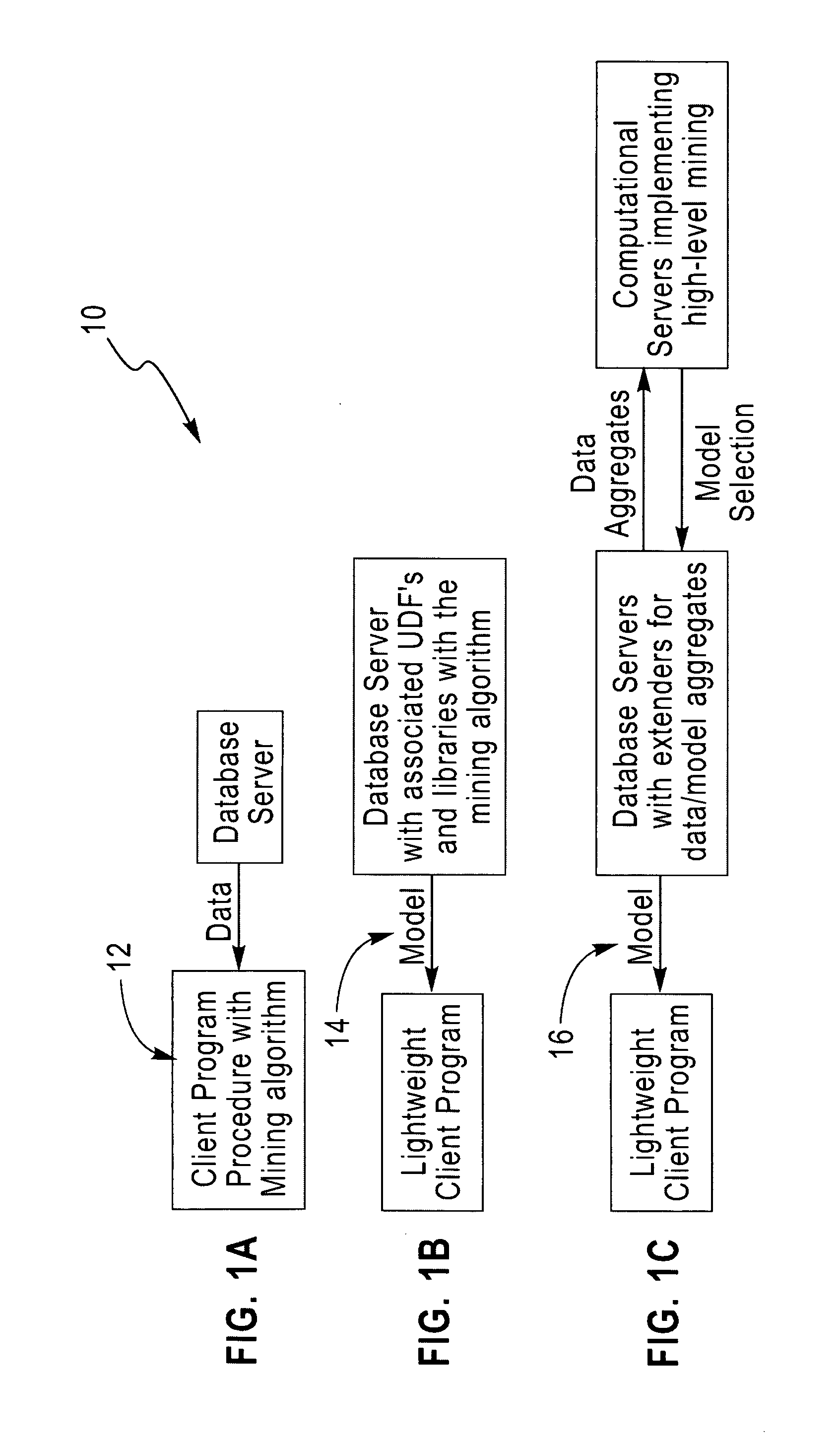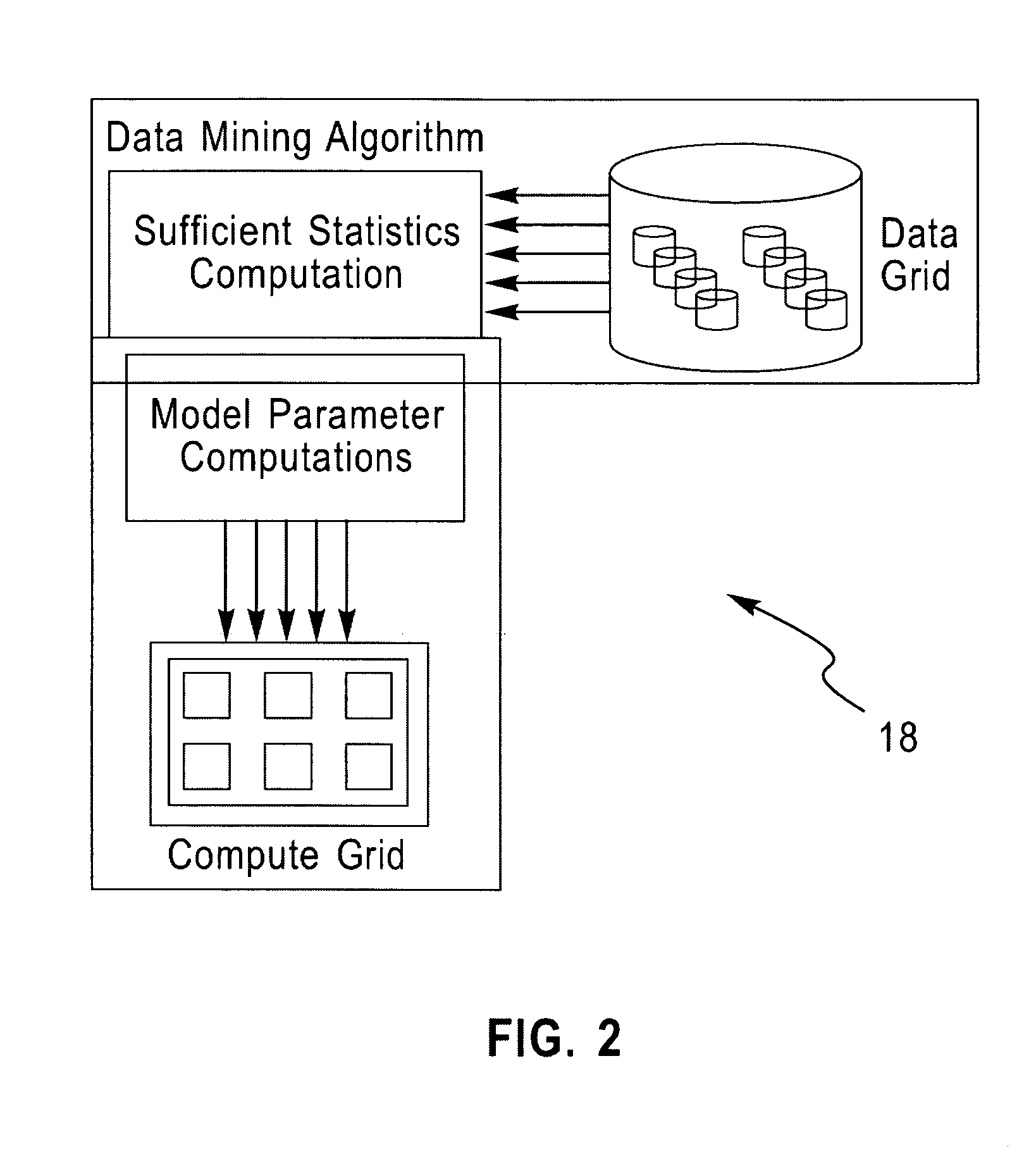System and architecture for enterprise-scale, parallel data mining
a data mining and enterprise-scale technology, applied in the field of data processing, can solve problems such as computational intensity, and achieve the effects of minimizing communication, minimizing data access costs or data movement, and improving model quality
- Summary
- Abstract
- Description
- Claims
- Application Information
AI Technical Summary
Benefits of technology
Problems solved by technology
Method used
Image
Examples
Embodiment Construction
[0036] The details of the present invention, both as to its structure and operation, can best be understood in reference to the accompanying drawings, in which like reference numerals refer to like parts.
[0037]FIG. 1 (numeral 10) comprises FIGS. 1(a), 1(b), and 1(c).
[0038]FIG. 1(a) (numeral 12) shows a client-based data mining architecture that is typical of previous art, and this architecture is useful for carrying out data mining studies in an experimental mode, for preliminary development of new algorithms, and for testing parallel or high-performance implementations of various data mining kernels. In recent years, the commercial emphasis has been on the architecture in FIG. 1(b) (numeral 14) where the model generation and scoring subsystems are implemented as database extenders for a set of robust, well-tested data mining kernels. All major database vendors now support integrated mining capabilities on their platforms. The use of accepted or de-facto standards such as SQL / MM, ...
PUM
 Login to View More
Login to View More Abstract
Description
Claims
Application Information
 Login to View More
Login to View More - R&D
- Intellectual Property
- Life Sciences
- Materials
- Tech Scout
- Unparalleled Data Quality
- Higher Quality Content
- 60% Fewer Hallucinations
Browse by: Latest US Patents, China's latest patents, Technical Efficacy Thesaurus, Application Domain, Technology Topic, Popular Technical Reports.
© 2025 PatSnap. All rights reserved.Legal|Privacy policy|Modern Slavery Act Transparency Statement|Sitemap|About US| Contact US: help@patsnap.com



